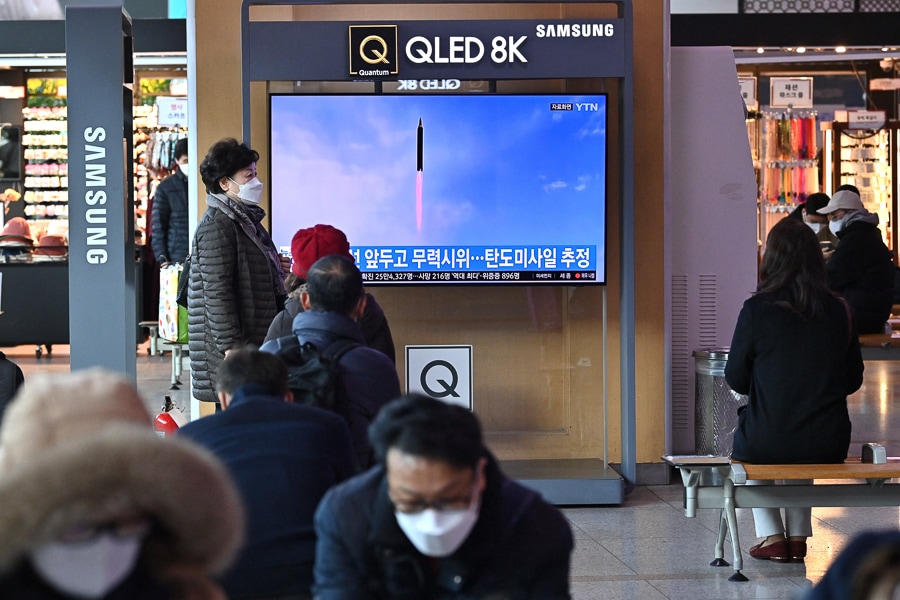
North Korea testing new intercontinental missile
American forces are putting its missile defense units in Asia in a state of "enhanced readiness" for what they expect will be another launch intended to demonstrate the range of the new missile
 People watch a television screen showing a news broadcast with file footage of a North Korean missile test, at a railway station in Seoul on March 5, 2022, after North Korea fired at least one "unidentified projectile" in the country's ninth suspected weapons test this year according to the South's military.
Image: Jung Yeon-je / AFP via Getty Images
People watch a television screen showing a news broadcast with file footage of a North Korean missile test, at a railway station in Seoul on March 5, 2022, after North Korea fired at least one "unidentified projectile" in the country's ninth suspected weapons test this year according to the South's military.
Image: Jung Yeon-je / AFP via Getty Images
WASHINGTON — The White House on Thursday said that North Korea had begun testing a new intercontinental ballistic missile in recent days and that American forces were putting their missile defense units in Asia in a state of “enhanced readiness” for what they expect will be another launch intended to demonstrate the range of the new missile.
In a briefing Thursday, a senior American official told reporters that in a departure from the past, North Korea had tried to hide the nature of the tests, both of which have taken place during the Russian invasion of Ukraine. They identified the missile as the same one that the North had rolled through Pyongyang in October 2020. But until recently, it had not been tested.
It is not clear whether the tests were timed by Kim Jong Un, the North Korean leader, to come at a time of maximum distraction in Washington and fear of a broader war in Europe. Whatever the reason, the emergence of a new intercontinental missile, ultimately intended to show that North Korea could reach American cities, adds to the list of simultaneous national security challenges facing President Joe Biden. At least two of them involve nuclear weapons in the hands of unpredictable dictators.
The White House said the North had “tried to hide these escalatory steps,” suggesting it was not ready to unveil a working version of the missile.
Although the missiles that were tested recently were designed as intercontinental missiles, the tests themselves were fairly short range. That suggests that components of the missiles were still being tested and that the United States was trying, with the revelation, to short-circuit a more comprehensive test that might show whether the weapon could reach American shores.
©2019 New York Times News Service







